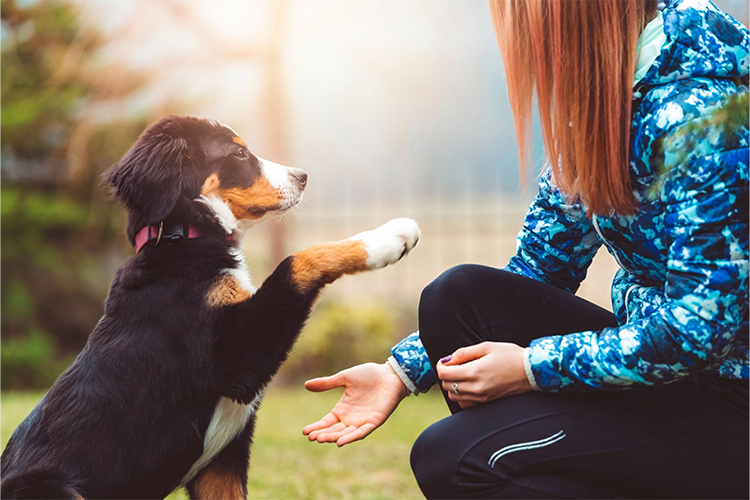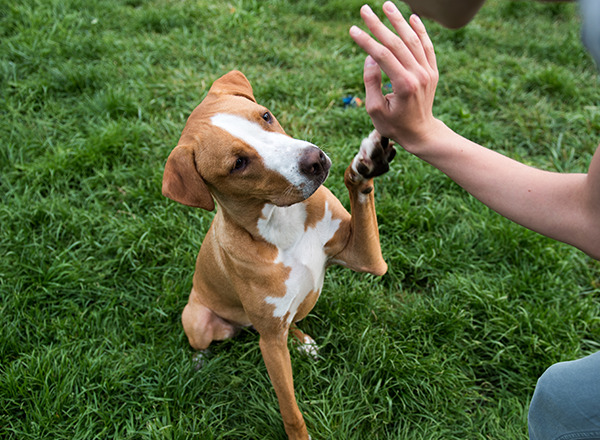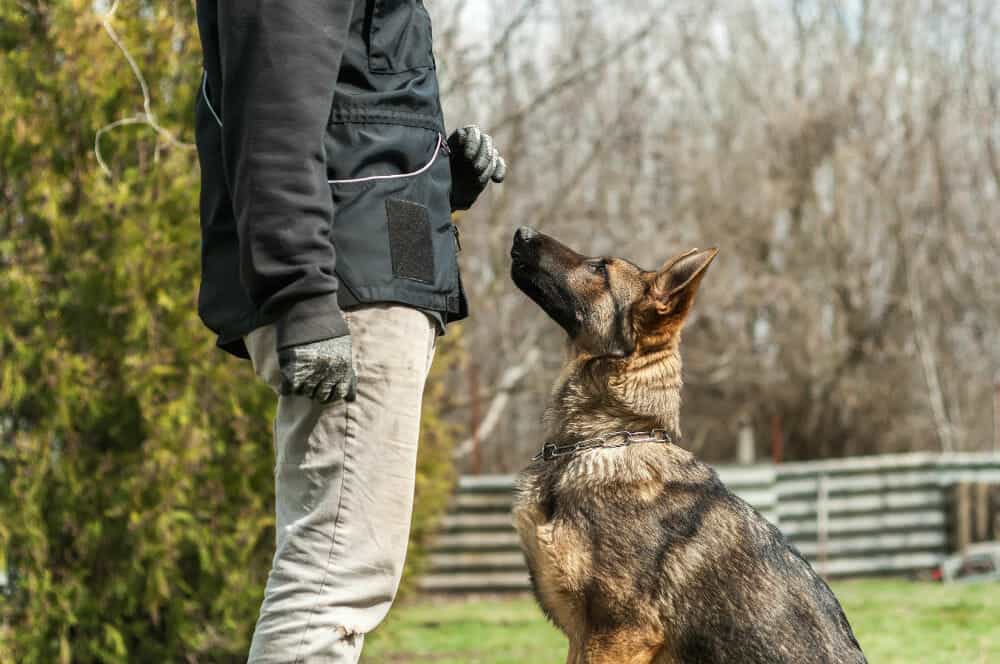The Advantages of Very Early Dog Training for a Mannerly Animal
The Advantages of Very Early Dog Training for a Mannerly Animal
Blog Article
Necessary Tips for Successful Dog Training: An Overview for Animal Owners
Effective pet training is a diverse process that calls for a calculated method customized to both the family pet's temperament and the proprietor's goals. Understanding just how to navigate these barriers can substantially enhance the training experience, inevitably transforming the partnership between proprietor and dog.
Recognizing Dog Actions
Recognizing dog behavior is vital for reliable training and cultivating a harmonious relationship in between dogs and their owners. dog training. Pets communicate mainly with body language, vocalizations, and actions, making it critical for proprietors to translate these signals precisely.

Socializing plays a significant function in pet dog actions; direct exposure to numerous environments, individuals, and other pets can dramatically influence a dog's character. Furthermore, variables such as breed characteristics and individual temperament need to lead training techniques, as some breeds may have specific behavior qualities that require tailored approaches. By recognizing these elements, proprietors can develop an encouraging environment that urges favorable behavior, leading to effective training end results and a deeper bond with their animals.
Developing Regular Commands
Efficient communication with your pet dog begins with establishing constant commands. This foundational aspect of training is critical for cultivating understanding in between you and your family pet. Uniformity in the commands you utilize ensures that your pet can dependably connect details words or phrases with the preferred behaviors.
When picking commands, pick clear, distinctive words that are easy to set apart and say from each other. Prevent utilizing similar-sounding commands that may puzzle your pet. As an example, making use of "sit" and "stay" is ideal, however "sit" and "struck" could bring about misunderstandings.
In addition, keep the same tone and quantity for every command. Dogs are sensitive to singing signs, so varying your tone can create complication.
It is similarly important to ensure that all relative get on the very same web page concerning the commands used. A united front in command usage will prevent combined signals and strengthen the discovering process.
Favorable Support Methods
The power of positive support in pet training depends on its capacity to encourage wanted behaviors via rewards and praise. This method is based in the concept that behaviors adhered to by beneficial results are more probable to be duplicated. By integrating positive support into your training routine, you can properly shape your dog's habits in a constructive manner.
To carry out favorable reinforcement, it's vital to determine what inspires your canine, whether it be deals with, toys, or verbal appreciation. When your pet dog carries out a desired action, such as sitting on command, immediately reward them with a reward or love. This organization between the command and the positive result enhances their understanding.
It's essential to timing the rewards correctly; delivering the support within seconds of the preferred actions aids your dog make the connection (dog training). Furthermore, consistency is crucial-- make sure that all family members make use of the very same commands and reward systems to prevent complication

Progressively, you can lower the regularity of treats as your pet dog learns the habits, transitioning to commend or recurring incentives. This method not only cultivates a solid bond between you and your pet yet also promotes a favorable learning setting, making training a satisfying experience for both.
Socialization and Communication
Consistently exposing your canine to a selection of atmospheres, individuals, and other animals is essential for their social advancement. Socialization should begin early, preferably throughout the critical home window of 3 to 14 weeks, when puppies are most receptive to brand-new experiences. Older canines can likewise benefit from ongoing socialization efforts.
Introduce your pet dog to various settings, such as parks, pet-friendly shops, and urban areas. This exposure aids them adjust to numerous stimuli, reducing anxiety and worry responses. Urge favorable communications with other pets and individuals, ensuring that these experiences are controlled and risk-free to foster confidence.
Utilize organized playdates with well-mannered canines, as this can improve your canine's social abilities and instruct them suitable habits. Obedience classes and training sessions also provide exceptional opportunities for socializing, enabling your pet dog to connect with others in a monitored setting.
Screen your pet dog's body movement during interactions, as this will aid you gauge their comfort degree. Slowly boost direct exposure to more difficult circumstances while guaranteeing that each experience declares. A well-socialized pet dog is more probable to show balanced actions, making them a happiness to have in any kind of setting.
Resolving Usual Training Challenges
Every canine proprietor will run into training challenges at some time, despite their pet dog's age or socializing degree. Identifying typical concerns such as stubbornness, diversions, and terror can assist in developing effective approaches for renovation.

Diversions throughout training sessions can derail emphasis. To fight this, begin training in a peaceful atmosphere with very little stimulations. Slowly introduce distractions as the dog comes to be more skillful in commands. Short, constant training sessions are likewise effective in keeping attention.
Fearfulness can prevent a canine's discovering procedure. Gradual desensitization to the resource of anxiety, coupled with positive support, can aid alleviate anxiety. Patience is critical; never force a pet into a scenario that triggers distress, as this may aggravate the problem.
Inevitably, understanding and addressing these usual obstacles with a structured technique will certainly foster a much more efficient training experience, enhancing the bond in between pet dog and owner while advertising effective discovering.
Final Thought
In summary, effective canine training counts on a detailed understanding of canine habits, the establishment of constant commands, and the application of positive support methods. Socialization plays an important duty in developing well-adjusted family pets, while attending to common training challenges requires patience and flexibility. By carrying out these necessary techniques, family pet owners can next foster a solid bond with their pets and advertise desirable habits, eventually causing an unified partnership in between humans and their canine friends.
Comprehending dog behavior is necessary for efficient training and fostering an unified connection in between canines and their proprietors.Socialization plays a considerable role in pet habits; direct exposure to different atmospheres, people, and other animals can substantially impact a dog's character.The power of positive support in canine training exists in its capacity to encourage preferred habits via incentives and praise. By incorporating favorable support into your training routine, you can efficiently shape your canine's habits in a positive way.
In recap, click for info successful pet dog training depends on a thorough understanding of canine behavior, the establishment of regular commands, and the application of favorable reinforcement strategies.
Report this page